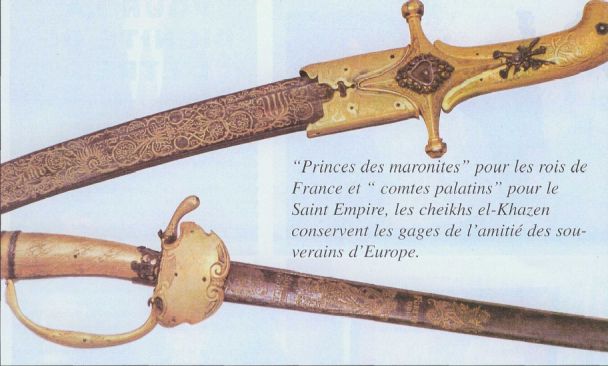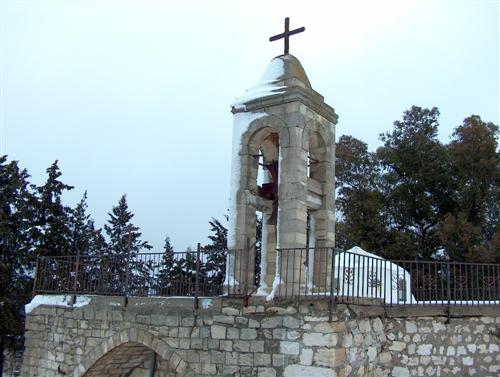Former Prime Minister Saad Hariri’s efforts to ensure the release of the Lebanese pilgrims who were abducted earlier this week have …
Siham Mahmoud has been waiting for two days to know if her husband is still alive or not. Mahmoud’s husband, Awad …
Warren Buffett sticks with what he knows, and that now includes newspapers
Warren Buffett doesn't buy Google.
Last week, he didn't buy Facebook, the social-media phenomenon that started trading Friday on the Nasdaq, ending the day with a market capitalization of about $105 billion.
"I kind of ventured quite a ways out to buy IBM," Buffett said in an interview with the Fox Business cable network. "Facebook would be — my doctor would require a checkup."
No, Buffett puts money in things he understands. Among them: trains, insurance and newspapers.
Yes. Newspapers.
Atop his shopping list last week was a cluster of Southern newspapers in an industry that is — as Buffett himself said during this month's shareholders meeting of Berkshire Hathaway Inc., his $200 billion company — declining.
In fact, he agreed to put $142 million in newspapers, buying the Winston-Salem Journal and all but one of Media General Inc.'s newspapers in a deal announced last week.
"Warren Buffett is the guy who orchestrated this transaction," said Terry Kroeger, president of BH Media Group, a holding company set up by Berkshire.
Efforts to contact Buffett were unsuccessful. In previous interviews, Buffett has said newspapers can do fine as long as they provide content that no one else does, and as long as they don't provide it for free.
When the transaction goes through, probably by June 25, the ownership structure will have a few layers.
Kroeger said BH Media owns World Media Enterprises, which will be the actual owner of the Journal and 62 other dailies and weeklies in Virginia, North Carolina, South Carolina and Alabama, in addition to digital assets, including websites and mobile and tablet applications.

The world’s worst traffic
IBM's "Commuter Pain 2011" survey doesn't look at the causes of congestion or offer any solutions. Too difficult. Instead, IBM merely asks people how they commute and how much their commute sucks. Congratulations Mexico City, you suck and you know it.
The chart above shows how people in 20 cities react to their commute, with drivers in China and Russia describing traffic that sounds like the premise of a Jacques Tati movie. More than a quarter of respondents in Moscow claim to have spent more than three hours stuck in traffic. And we all know how crazy China is.
Tellingly, the 8,042 people surveyed were people who lived in a major city, were 18-65 years old, and drove a vehicle alone as their main mode of transportation. Considering there are decent transit options in most of these places it means IBM interviewed the people who were mostly to blame for their own congestion.
The Inrix study shows that drivers in other major cities are still spending a fair number of hours stuck in traffic, too. While Los Angeles ranked a close second to Honolulu, those in San Francisco spent almost 48 additional hours in the car because of traffic.
The news wasn't all bad, though. Inrix says overall congestion was down 30 percent in 2011 from the year before, and notes that of the 100 cities it surveyed, 70 of them logged lower rates of congestion year over year.
These cities had the worst traffic in 2011, according to Inrix, which lists the average hours wasted per driver after each city:
10) Chicago – 32.8 hours
9) Boston - 35 hours
8) Austin – 30 hours
7) Seattle – 33 hours
6) Washington, D.C. – 45 hours
5) Bridgeport, CT – 42 hours
4) New York – 57 hours
3) San Francisco – 48 hours
2) Los Angeles – 56 hours
1) Honolulu – 58 hours
The study also finds that, nationally, the worst morning commute occurs on Tuesday, while the worst evening commute is on Friday.
Khazen History


Historical Feature:
Churches and Monasteries of the Khazen family

St. Anthony of Padua Church in Ballouneh
Mar Abda Church in Bakaatit Kanaan
Saint Michael Church in Bkaatouta
Saint Therese Church in Qolayaat
Saint Simeon Stylites (مار سمعان العامودي) Church In Ajaltoun
Virgin Mary Church (سيدة المعونات) in Sheilé
Assumption of Mary Church in Ballouneh
1 - The sword of the Maronite Prince
2 - LES KHAZEN CONSULS DE FRANCE
3 - LES MARONITES & LES KHAZEN
4 - LES MAAN & LES KHAZEN
5 - ORIGINE DE LA FAMILLE
Population Movements to Keserwan - The Khazens and The Maans
ما جاء عن الثورة في المقاطعة الكسروانية
ثورة أهالي كسروان على المشايخ الخوازنة وأسبابها
Origins of the "Prince of Maronite" Title
Growing diversity: the Khazin sheiks and the clergy in the first decades of the 18th century
Historical Members:
Barbar Beik El Khazen [English]
Patriach Toubia Kaiss El Khazen(Biography & Life Part1 Part2) (Arabic)
Patriach Youssef Dargham El Khazen (Cont'd)
Cheikh Bishara Jafal El Khazen
Patriarch Youssef Raji El Khazen
The Martyrs Cheikh Philippe & Cheikh Farid El Khazen
Cheikh Nawfal El Khazen (Consul De France)
Cheikh Hossun El Khazen (Consul De France)
Cheikh Abou-Nawfal El Khazen (Consul De France)
Cheikh Francis Abee Nader & his son Yousef
Cheikh Abou-Kanso El Khazen (Consul De France)
Cheikh Abou Nader El Khazen
Cheikh Chafic El Khazen
Cheikh Keserwan El Khazen
Cheikh Serhal El Khazen [English]
Cheikh Rafiq El Khazen [English]
Cheikh Hanna El Khazen
Cheikha Arzi El Khazen
Marie El Khazen